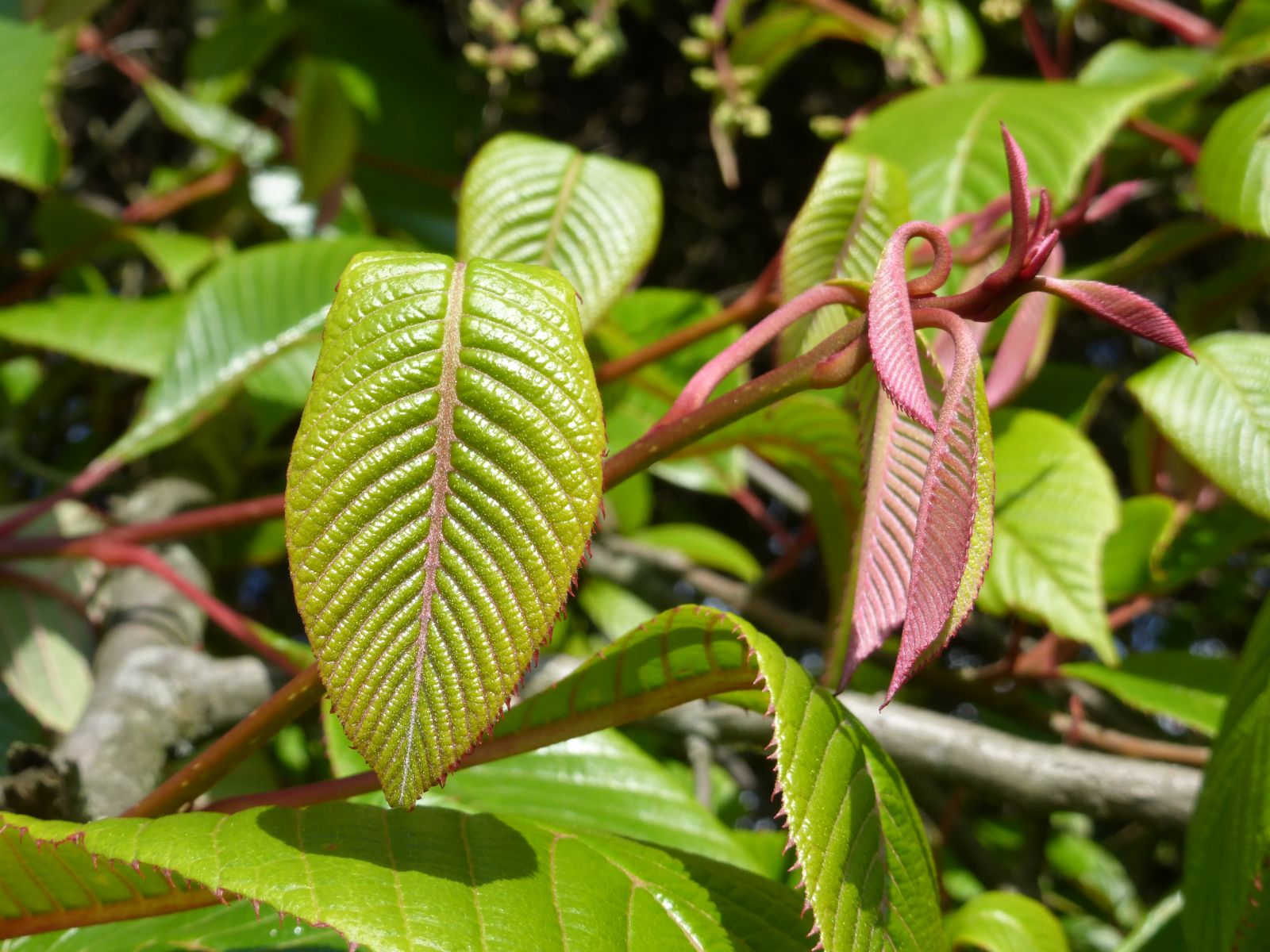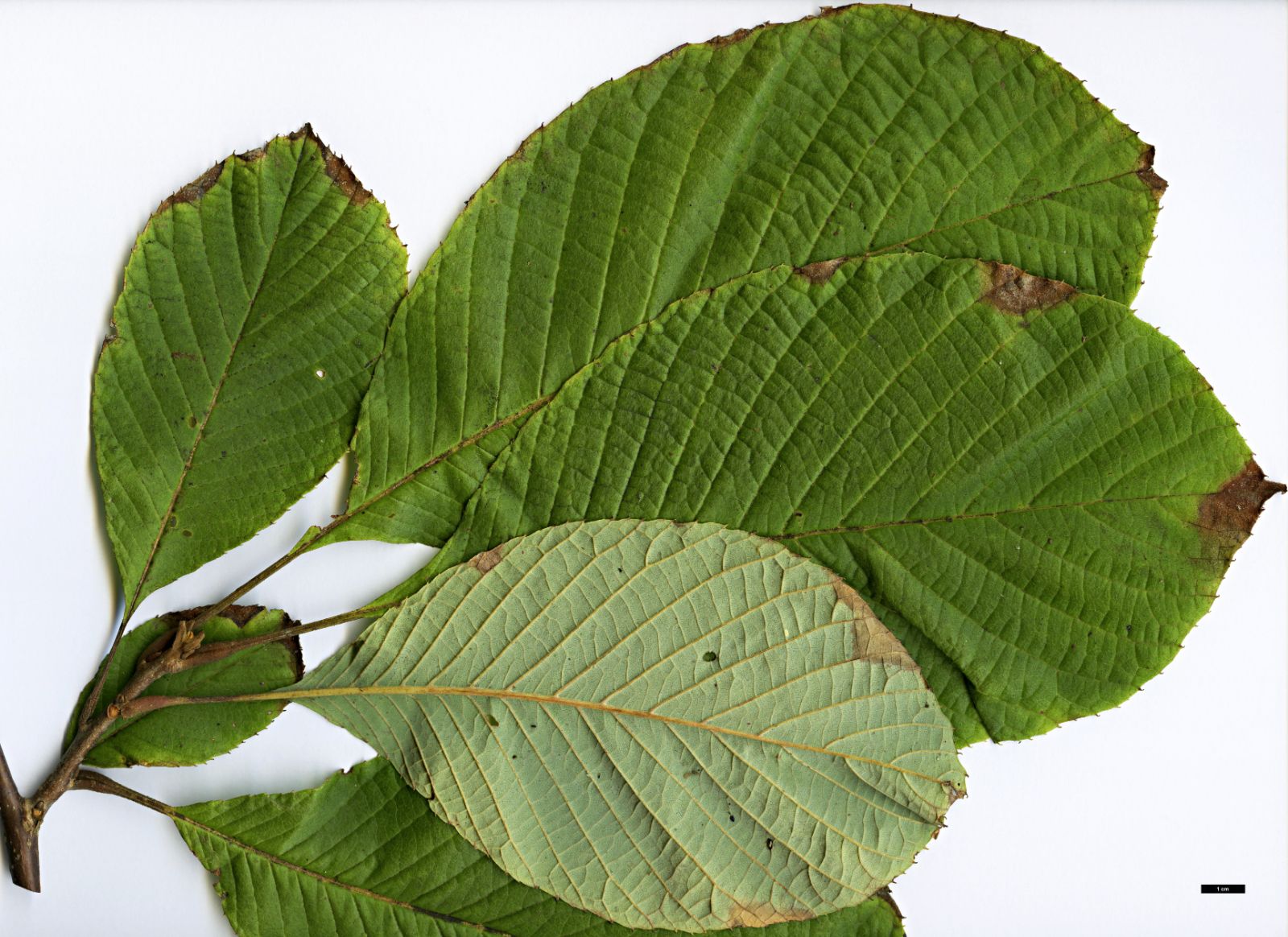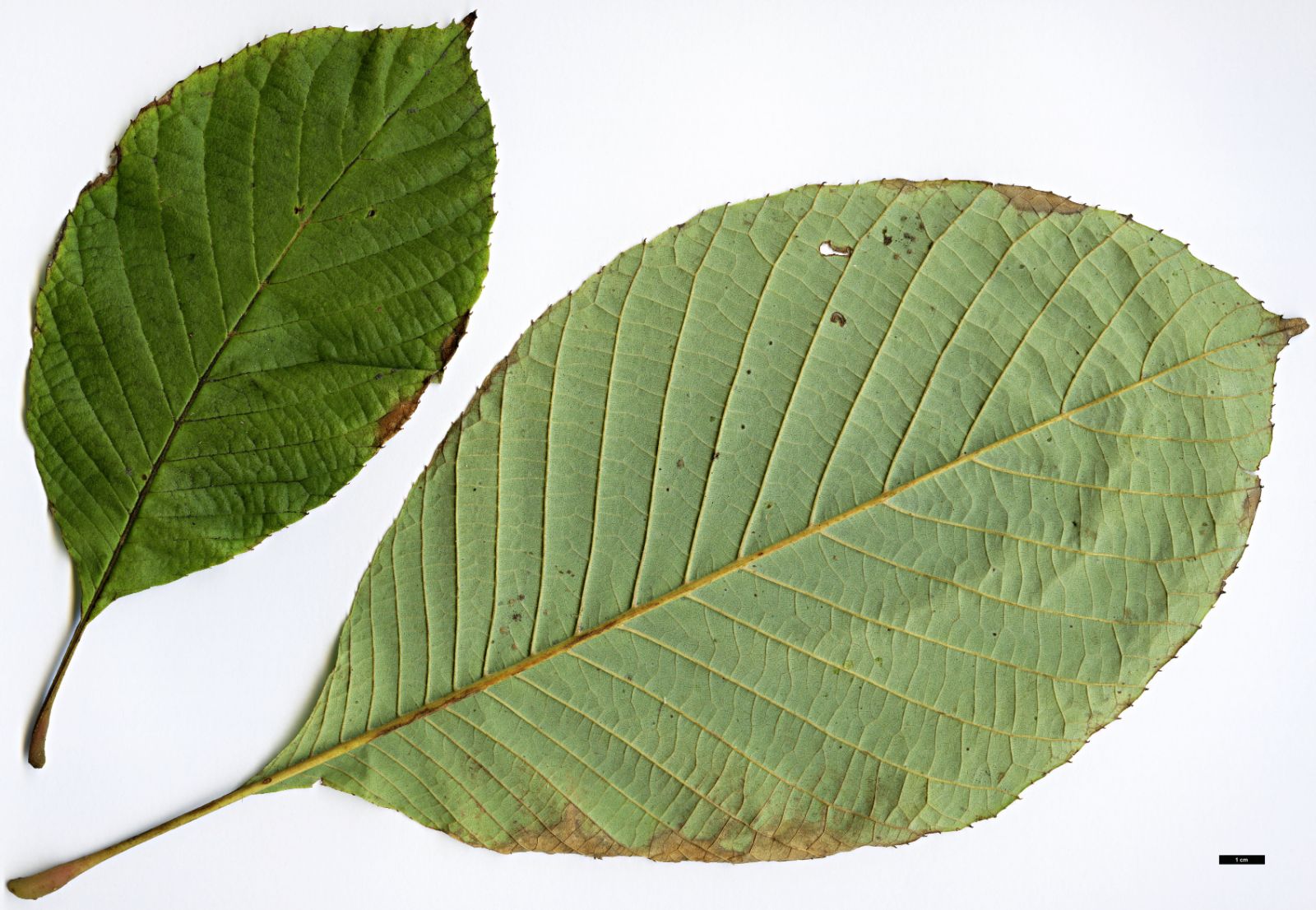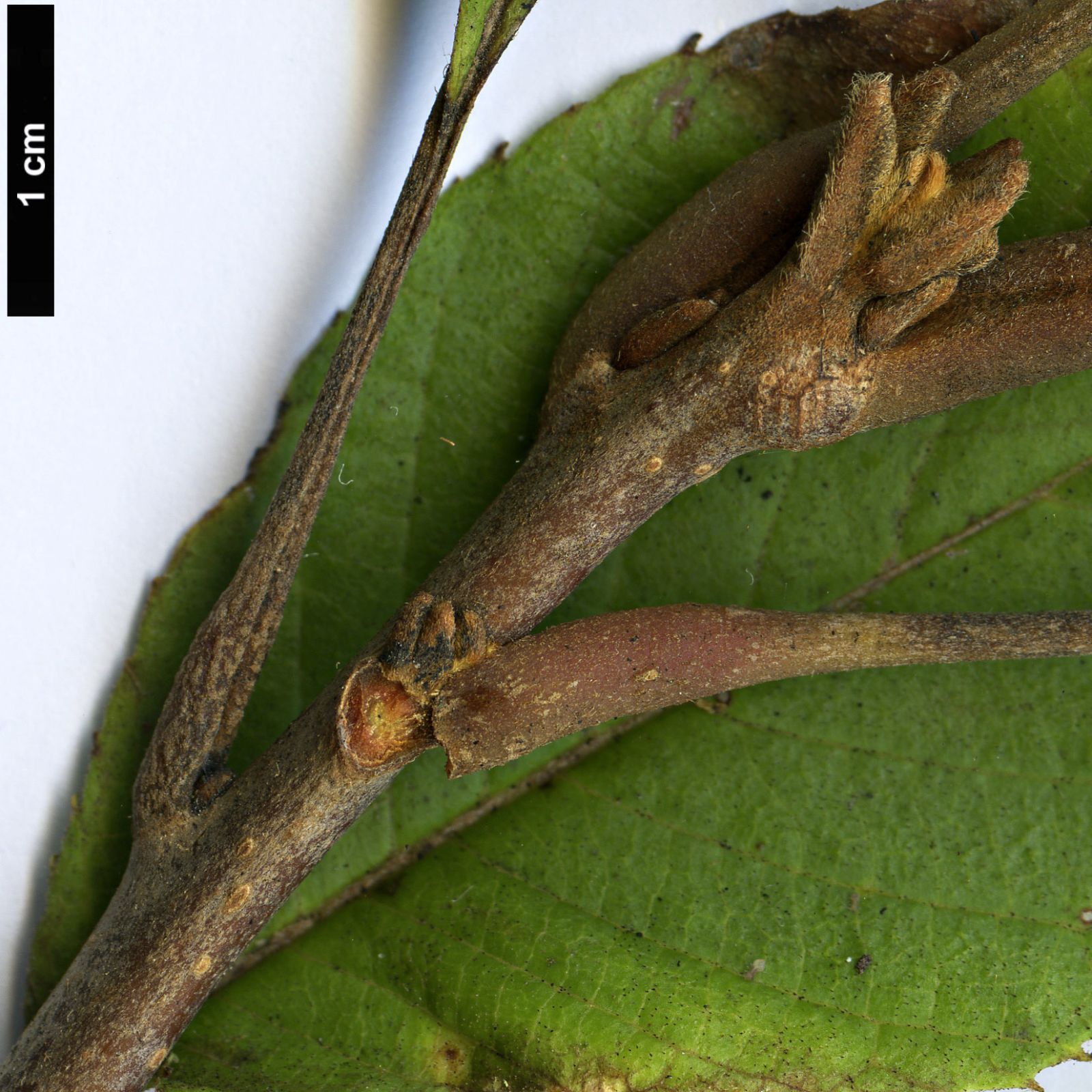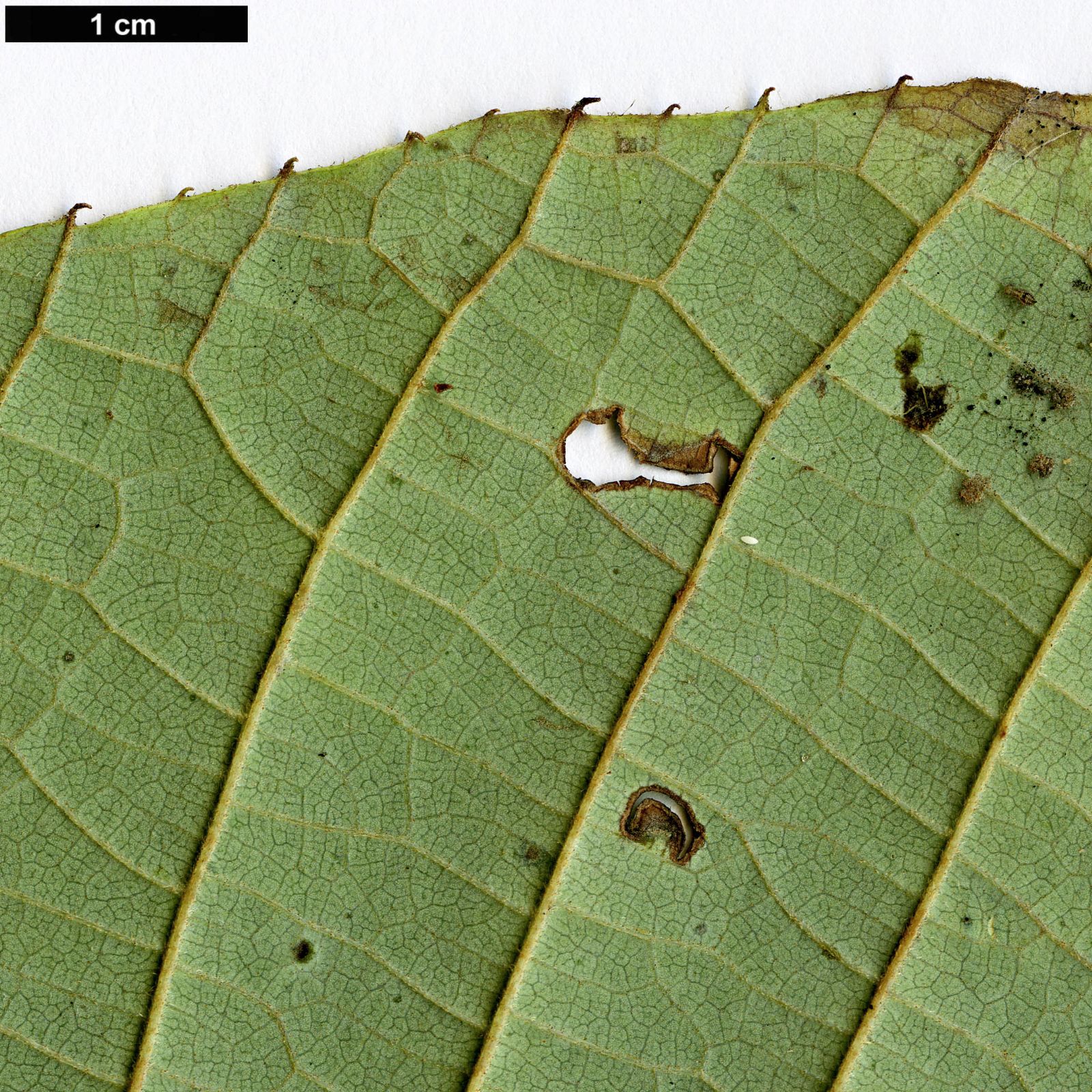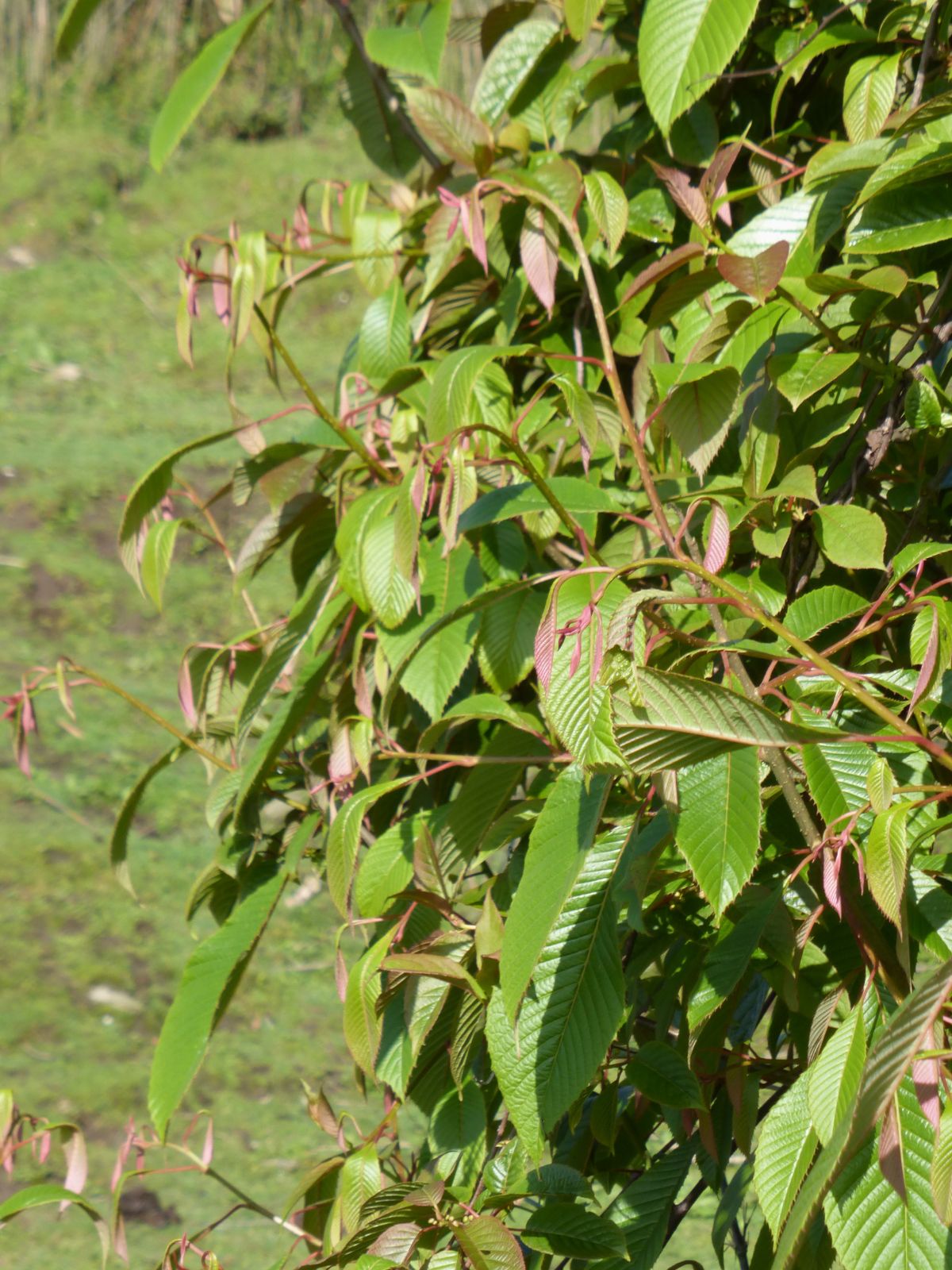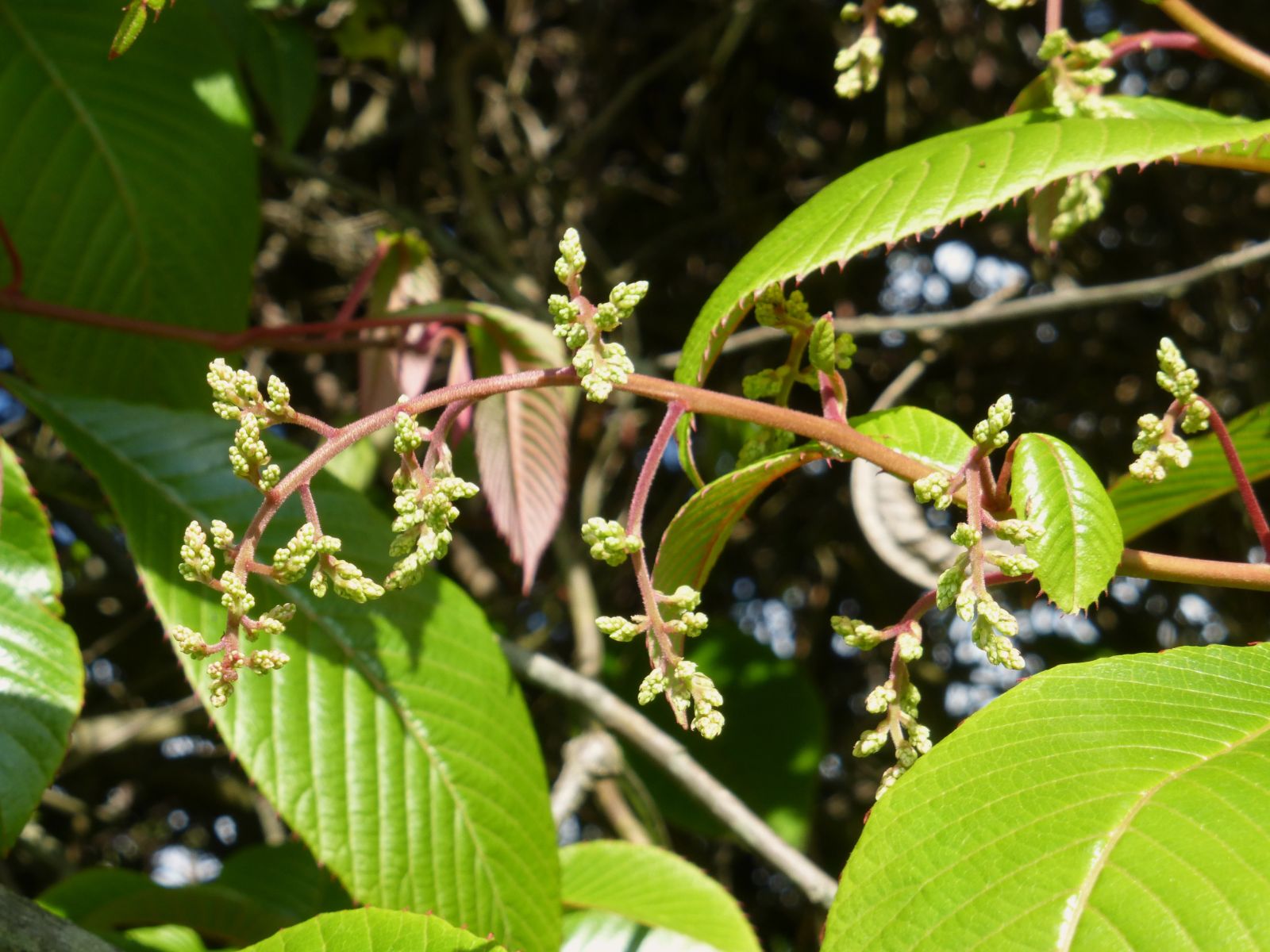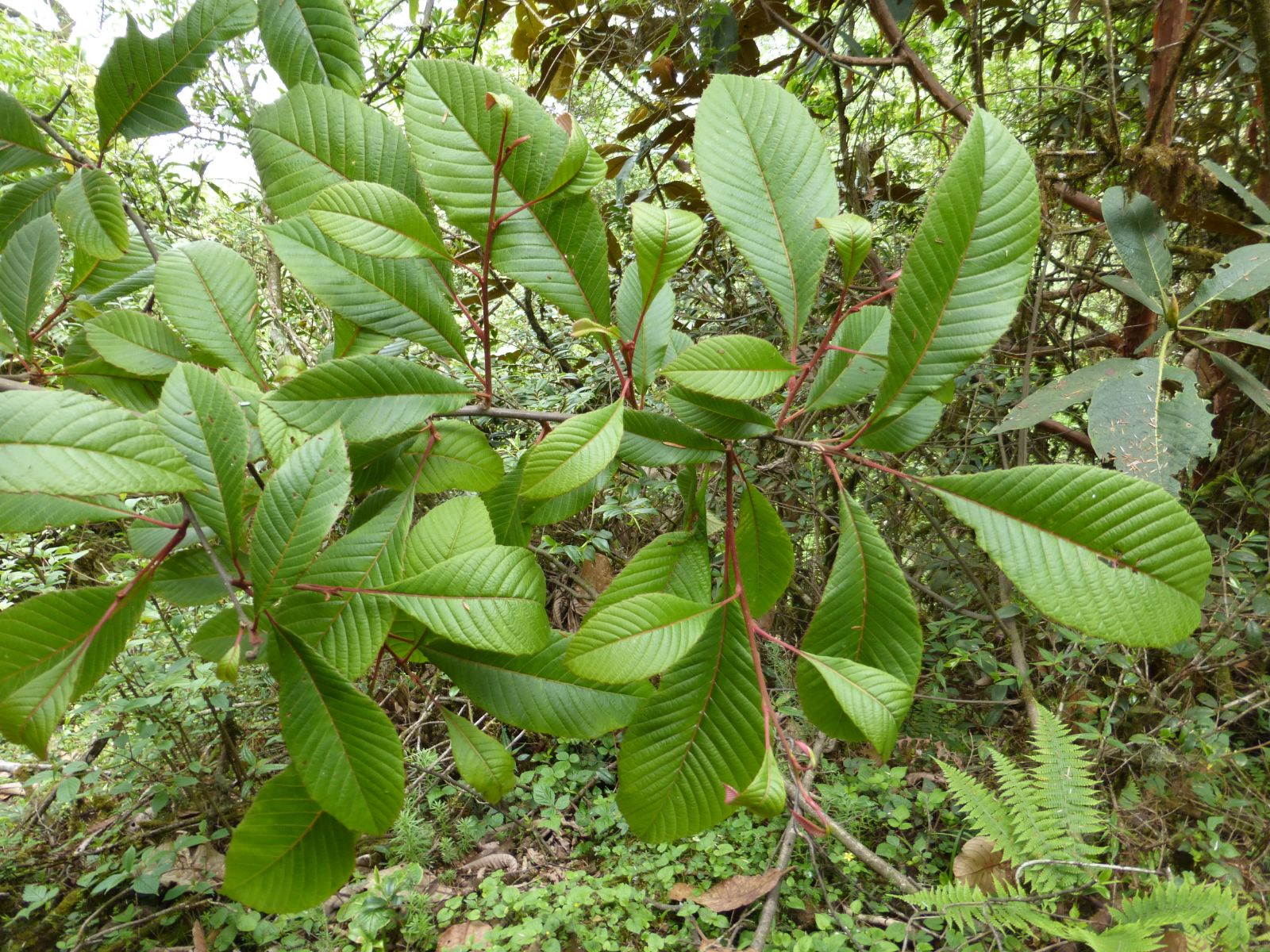Meliosma dilleniifolia
Sponsor
Kindly sponsored by
Lady Diana Rowland
Credits
Owen Johnson (2022)
Recommended citation
Johnson, O. (2022), 'Meliosma dilleniifolia' from the website Trees and Shrubs Online (treesandshrubsonline.
Deciduous tree to 8 m tall. Bark pale, corky. Twigs and buds with a dense rusty pubescence. Leaf simple, 10–30 × 5–8(–14) cm, obovate to elliptic with a cuneate base and pointed tip; pubescent on both sides; veins conspicuously parallel in 16–20 pairs, rather straight and running to the margin, where there is a small peg-like tooth, interspersed with (0–)1–4 intermediate but similar teeth, the teeth extending to near the leaf-base; petiole 15–35 mm. Flower-heads terminal, erect, opening in summer,14–30 cm tall, branched 3 or 4 times; stem angular and pubescent. Sepals 5. Petals 5, white, to c. 2 mm wide, ciliate. Fruit 3–6 mm wide, finely reticulate. (Guo & Brach 2007; Bean 1981; De Langhe 2022).
Distribution Bhutan Myanmar In mountains in the north of the country China SE Xiyang, Yunnan India In the Himalaya Nepal
Habitat Mountain forests, 2000–3300 m asl.
USDA Hardiness Zone 7
RHS Hardiness Rating H5
Conservation status Not evaluated (NE)
This is the Himalayan representative of a group of deciduous Meliosma species with numerous, neatly parallel leaf-veins, which in this case suggest the foliage of the Elephant Apple trees (Dillenia); the leaves are often the largest of any of the hardy, simple-leaved Meliosma, and the presence of up to four intermediate teeth between the teeth tipping each side-vein is distinctive.
This taxon is likely to be less hardy than its east Asian allies, and seems to be very rare in cultivation in the west (J. De Langhe pers. comm). Three of these allies were reduced by Frits van Beusekom in the 1970s to subspecies of M. dilleniifolia, meaning that references to M. dilleniifolia now have to be considered liable to relate to any of these other taxa, and that plants labelled simply as M. dilleniifolia frequently turn out to be something else; examples of imposters include a floriferous labelled bush at Trelissick in Cornwall and a plant at Oisquercq in Belgium (both of these photographed by Guillaume Mamdy for the introduction to Meliosma here), material advertised in Germany in 2022 from Herrenkamper Gärten (Herrenkamper Gärten 2022), and a plant grown at the Washington Park Arboretum in Seattle whose fallen autumn leaves were captured in 2014 by the photographer Mark Windom (Windom 2014).
According to Desmond Clarke, true Meliosma dilleniifolia reached the Royal Botanic Gardens, Kew in the 1930s (Clarke 1988), but this plant has long gone, along with genuine examples at the Sir Harold Hillier Gardens (J. De Langhe pers. comm.). The species was reintroduced to England from the Indian Himalaya by Keith Rushforth (KR 9256), and this collection is represented at Tregrehan in Cornwall. A more recent introduction, made by Crûg Farm Plants, was WJC 13819 (Royal Horticultural Society 2020). In 2014 a multi-stemmed plant 7 m tall grew in the Cornish garden of the late plant-hunter Edward Needham (Tree Register 2022), though its authenticity may need to be confirmed.

